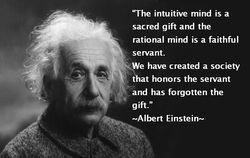 Soul growth is primarily about taking responsibility for your choices, past, present and future. Intuition is necessary to guide you through each moment, helping ensure your right new course of action. Intellect can only go so far, since it pulls information and ideas mainly from past experiences—experiences that often hold false beliefs, faulty decisions, and unresolved issues. It’s hard to make clear decisions when you are seeing a situation through a clouded filter. What is intuition then? It is the avenue for receiving answers from your Higher Self—that part of you that sees through the drama (yours and others’) of a situation. Intuition is a spiritual muscle that takes practice, time, and attention to build, clarify, and trust. If you haven’t already practiced using your intuition, here are some ideas to being. If you regularly check in with your intuition, these ideas may help you go deeper, and strengthen your intuitive muscles. 1. Practice with the small stuff. Ask for guidance about insignificant matters daily. When you get your answer, go with it and see what happens! 2. Observe yourself, your thoughts, your emotions on a regular basis, throughout the day. Millions of thoughts move through your mind each day. Some of them are true, but most of them are not. When you go through life unaware of these thoughts, you inevitably act on the false ones, reinforcing them. Observe your thinking and begin to discern the difference! Also, there are times you can let an emotional response go, and be done with it. Other times, you have to watch an emotional or thought pattern for a while so you can understand it enough to let it go. Observing your inner self greatly aids this process. 3. MEDITATE! This is the best exercise for improving your intuition. Meditation raises your vibration, allowing you to problem solve at a higher level. Meditation also gives you practice discerning the real versus unreal among the thoughts that whip around your mind all day. 4. Work with tools to go deeper:
5. Detach from the result you think you want in a given situation. When you are follow an intuitive sense, just go with it. Which brings us to… 6. Trust the process! Your intuition is connected to Universal Wisdom. Trust your inner Self! Now, go work that intuition!  I am guilty of a most false assumption: “Everything in my life will go smoothly since I am on a spiritual journey.” Isn’t that cute? What a rude awakening to find out that I’m not always going to get my way from that God that I have always loved and tried to please! My first clue into this was the drive from Missouri to Florida right after being married. My new husband and I were enjoying the scenery, albeit a little lost. My husband pulled into a gas station to ask for directions (yeah, I got a winner) while I waited in the car. Out of nowhere, I was suddenly filled with jealous thoughts: “What if he finds someone in there more attractive than me? What if he finds her more interesting? What if? What if? What if?!” I was never jealous with previous boyfriends–not once. My attitude was, “Hey, if you want to date someone else, go right ahead. I don’t need to waste my time.” These thoughts that surfaced during our honeymoon trek came as a disarming and alien surprise. At the time, I didn’t know what to do with jealousy, and was quite embarrassed and overwhelmed by the emotions. I tried to hide what I was feeling, but didn’t do so well. Fortunately, my husband was kind enough to talk me through my feelings. …Which would have been great if all I needed to do was talk! I felt better in the moment, but those feelings were only a taste of what was to come. I had a whole slew of faulty childhood beliefs that were surfacing to be healed. This was what my spiritual journey was to be for several years: Clearing false beliefs from my childhood–not just jealousy, but a series of dysfunctional attitudes and concepts about relationships overall. What the heck? I wanted to be married and live happily ever after! I wanted to ride off into the sunset, live on the beach, and be eternally wise and wonderful! That emotional work was getting in my way of my FUN! How dare it! I eventually learned that this is the spiritual process, and healing needs showed up in all areas of life: my relationships, career endeavors, and how I perceived myself. Even those who wouldn’t consider themselves on the spiritual journey have issues that arise to be healed. This clearing of false beliefs, shedding light on what is real and true (until the next round of clearing!) is what this journey is about! It is simply part of our journey as humans moving into Something Greater. How disappointing, I have thought–at first and many times since then! Yet, how necessary to be able to move forward unimpeded by my fears and false assumptions. How much stronger my intuition became because of my willingness to do the work. What better life choices I have made because of my willingness to let go of my lesser ideas of “fun” and short-sighted ways of doing things. The spiritual journey is about clearing away our personal ideas of what is real, valid and important; and open to our intuitive nature that knows what is better for us. Our Higher Self waits for us to loose our little wills and cooperate with the bigger picture that can only be perceived when we tap into it! And we can’t tap into it while we hold fears and wrong ideas about whatever situation is at hand. The spiritual journey takes diligence, willingness, and spunk. What are you willing to let go of so you can grow? 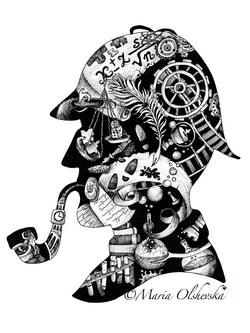 Change happens. Sometimes we change because we want to; sometimes we change because we have to. When dealing with a change that is out of our control, one of the best approaches is to Sherlock it. “My name is Sherlock Holmes. It is my business to know what other people don’t know.” Sherlock Holmes, The Adventure of the Blue Carbuncle You know Sherlock. He’s the odd, people-challenged character who sure knew how to solve mysteries. Don’t some changes feel like mysteries to you? Recently, my favorite yogurt brand changed the consistency, flavor and protein content of their product, and I wasn’t happy! I will use this silly example to walk you through the process of moving through a change that is out of your control so you can get a feel for the process. If it can work with yogurt, maybe it will transfer to any bigger change you may be dealing with! “…[W]hen a fact appears to be opposed to a long train of deductions it invariably proves to be capable of bearing some other interpretation.” Sherlock Holmes, A Study in Scarlet 1. What is the change that is happening around you? Describe the facts. What exactly is different? This company changed the protein content of my favorite yogurt went from 15 grams of protein down to 12! Plus, the consistency is more watery, and the flavor tastes watered down as well, but it’s cheaper! 2. Now you get to expand a little. How do you feel about this change? Are you angry, afraid, sad, or frustrated? Let it out, and include why you are feeling the way you do about this change. I feel really disappointed about this. I counted on those 15 grams of protein in the mornings when I didn’t have time for a larger breakfast. I would eat it at work as well, but now it isn’t satisfying as it was before. I don’t understand why they made these changes, and I feel angry. I feel especially frustrated because the only other comparable yogurt is at a grocery store that is inconveniently located! 3. What about this change is in your control? What about it is out of your control? (Keep to the facts here, too!) I can control whether or not I continue to purchase this brand of yogurt. I don’t have control over how it is made. I can write an email to the company, voicing my dissatisfaction, but I can’t control whether or not they do anything about my dissatisfaction, either. 4. What would be the best way for you to manage this change? What steps are you willing to take to make the necessary adjustments? I can consider other options, such as trying a different brand of yogurt, or making the trek to the other grocery store. I can also find other sources of quick proteins for my food intake needs, like protein bars. “Eliminate all other factors, and the one which remains must be the truth.” Sherlock Holmes, The Sign of Four Now it’s up to you what you decide to do. You can always choose to continue with emotional responses, such as disappointment, anger, frustration, sadness. If that’s the route you take, be sure to also answer this question: “For what good purpose would it serve for me to continue feeling (frustrated, sad, angry, hurt, etc) about this change?” That can be an eye-opener, and can lead to your choosing not to hold on to that reaction any longer than you need to. “What object is served by this circle of misery and violence and fear? It must tend to some end, or else our universe is ruled by chance, which is unthinkable.” Sherlock Holmes, The Cardboard Box When you have completed the process and made your adjustments, kick back like Sherlock (or perhaps in your own, healthier way) and feel good about solving the mystery of change. “Let me run over the principal steps. We approached the case, you remember, with an absolutely blank mind, which is always an advantage. We had formed no theories. We were simply there to observe and to draw inferences from our observations.” Sherlock Holmes, The Adventure of the Cardboard Box 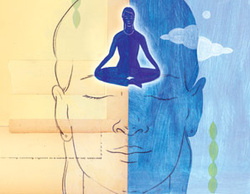 Since the transition into the new year, there have been many scientific revelations around the practice of mindfulness meditation. Mindfulness is focused attention, the observing of sensations and thoughts without getting caught up in them. Often the breath is the focus of mindfulness meditation, and yoga is an example of mindfulness practice. Meditators and yoga lovers have known the power of focused attention, stillness and breath awareness for a long time—thousands of years, even. Through many recent brain scans studies, science now acknowledges several physiological benefits of taking just five minutes every day to pay attention to the breath:
Convinced like a scientist yet? So, where to begin? All you need in your busy schedule is five minutes. Try to pick the same time each day so it becomes part of your daily routine. Think of it as necessary as brushing your teeth, except you are “brushing” away stress from your brain! Sit comfortably. Begin taking normal breaths. Make sure you are breathing from your diaphragm (“belly breathing”) rather than your lungs only (“chest breathing”). Rest your hand above the stomach and below the ribs, which is where your diaphragm is approximately located. As you breathe normally from your diaphragm, you will feel your belly rise as you inhale, and retract as you exhale. Continue for five minutes. If you find your mind wandering (which you will!) during this time, gently bring your attention back to your breathe. Notice any sensations in your body, but do not let your mind have a conversation about them. Simply bring your attention back to your breathe. Notice sounds around you, but again, don’t let your thoughts go on about them. Let your belly breathing be your primary focus. Keep a journal of the changes you notice over time. People have told me that their doctors asked them why their blood pressure was lower than their last check up. Others have noticed emotional equilibrium that wasn’t there before they began practicing. Others appreciate the sense of overall peace throughout their day. What benefits are coming to you through your practice? Further reading:
"'Mindfulness' Meditation Alters Gene Expression, Study Suggests", The Huffington Post | By Jacqueline Howard Posted: 12/09/2013 7:53 am EST | Updated: 01/19/2014 11:49 pm EST "The science behind meditation, and why it makes you feel better", GEORGE DVORSKY on IO9NEUROSCIENCE 4/04/13 11:28a "The Power of Concentration", By Maria Konnikova, Published: December 15, 2012 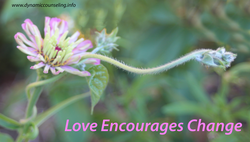 Each new year brings new energy and desire for change! Often when we have something we want to change in ourselves, the first response we have is anger, frustration, rejection. We then try to go about our desired change with a hammer over our heads! How many of us do well while getting bossed around, criticized and rejected? It might work for a little while—or a long while, if we are super-tolerant—but after a time, we stop trying so hard, or try to get away from the hammer, thus avoiding the task at hand. We do better at change when we have encouragement, acceptance and a caring eye guiding us in the new behavior. Who is the best person to do that for you? Maybe you have a supportive friend, or an encouraging therapist. But you are with you all the time! You are the one who will walk with you through all of the ups and downs of life! Here are a few ways to encourage yourself through any change you want to make:
A little love goes a long way to melt raw materials and create a masterpiece. Take a best friend with you into 2014…YOU! Happy New Year, and happy new YOU! 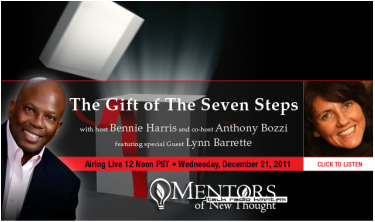 Two years ago, I had the privilege of participating in a three part web radio series on Jane Elizabeth Hart's powerful processing tool, Seven Steps for Successful Life Transitions, with Jane Elizabeth and my awesome husband, Gregory Barrette. Since it is a time of transitioning from one year into the next, I wanted to re-post these audios on the Seven Steps. Releasing the old year is an essential part of making room for a new year of experiences and spiritual growth! The first interview in the series, called "How to Move into the New Year Empowered", was with author and spiritual teacher Jane Elizabeth. Click here to listen. For more information on her formula for moving through changes, Seven Steps for Successful Life Transitions, and empowering yourself for the new year, click here. While you are there, check out the free spiritual resources available at Center For Enlightenment. "Every problem in life is here to support your soul's evolution. Unless you have a challenge, you will never know your capabilities. Your problems are not awful. They are the most wonderful tools designed to push you forward!" ~Jane Elizabeth My interview was next: "The Gift of the Seven Steps." Listen to the recorded show here: Mentors of New Thought Radio. Below is the description of the program: "My work with clients is to help pull out the patterns and help make the unconscious conscious," says therapist and spiritual counselor Lynn Barrette, LCSW. "Or, as leading psychiatrist Dr. Dan Siegel says in his book, Mindsight, “In order for us to become aware of the feelings inside us—to consciously attend to and understand them—we need to link these subcortically created emotional states to our [higher thinking] cortex.” Or, in spiritual terms, making the unconscious conscious! In order for us to heal the buried emotions and the beliefs that are sustaining them, we need to become aware of our hidden patterns that keep us stuck. "Jane Elizabeth's Seven Steps for Successful Life Transitions is the greatest, most thorough processing tool I have found to uncover and heal unconscious patterns, for myself as well as my clients." The final show in the series was with Gregory Barrette. Greg spoke about leaving the old year behind and "Making a New Start" in the new year. Here's what he says about this powerful tool: "The Seven Steps method is the single most effective way I know to forgive and release old, past issues and experiences... to fully let go of all that has happened in the past year and open up to a new experience in 201." Listen to to Greg's interview here. However you use the Seven Steps process, it will help catapult you into new spiritual understanding in many different situations in life. Try it out, and let me know how it works for you!  One of my favorite sayings of my spiritual mentor, Jane Elizabeth Hart, is “The joy is in the giving.” It has taken me many years to appreciate this as more than just a pretty platitude--especially this time of year! Finding joy in giving means to understand that when we are acting only for ourselves, that energy has no where to go but back to ourselves. This is important, to replenish and refresh ourselves sometimes. But when we give freely with joy and loving kindness, that energy ripples out into the far stretches of the universe! For that moment, we have expanded ourselves far outside of where our energy normally resides. It is like an amazing, huge yoga stretch! Plus, finding joy in giving makes us want to give more—to re-experience that joy, that refreshing stretch beyond ourselves. Once we get out of our box, we don’t want to go back inside that small space! Recently, I helped some friends pack Christmas gifts for children in other countries. There were several boxes, and as we filled each one, we were silently blessing each toy and piece of candy. I could imagine the love and joy the child would experience as she or he opened the box—an explosion of love and light! I could feel my own energy expanding beyond myself, beyond this country, rippling throughout the planet. The song I sung in childhood that reminds me of this concept is “Magic Penny”. Do you remember singing that song? Did you ever realize that the magic penny symbolized your own energy, multiplying and supporting you in infinitely greater ways? Here are a few of the lyrics: Love is something if you give it away; You’ll end up having more. It’s just like a magic penny: Hold it tight and you won’t have any. Lend it, spend it, and you’ll have so many They’ll roll all over the floor. As you give this season, no matter how big or small a gift, put your energy of love and joy into it, and don’t let it stop flowing at your gift’s recipient—see that love and joy rippling out, sending a wave of blessing throughout the planet. Happy Holidays of every kind! 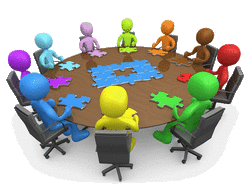 Do you know the many "yous" of you--the conglomerate of many selves that make up your whole self? At a recent women's retreat that I facilitated, we took an entire day to examine and become familiar with different parts of ourselves. We met Responsible, the Pusher, Do-Nothing, the Child, the Spiritual One, and many others. We asked them what they needed from us, how we could better support them. With some of these aspects, we asked for cooperation. By the end of the weekend, we were more conscious of the many parts of us than we have ever been before! Why bother with such a process of getting to know our many selves? Because there is one Greater Self that is hidden among this committee of selves. The parts come in and run the show, often times without our awareness or permission! The more we get to know the parts and learn what their needs and desires are, the more consciously we can decide if those needs and desires are aligned with the intention of the Greater Self. If so, we can go with it because it will align us more with the Whole. If a part of us has needs and desires that do not align with our soul's goal, then we are able to set clear and firm boundaries within ourselves to keep us on track with our Greater Self. When we feel stuck, we can ask, "Who is running the show?" As we become familiar with the many different expressions of self that we have, we can more easily answer this question and make choices for ourselves accordingly--conscious choices that keep us on track, instead of unconscious impulses that pull us every which way. What are the many different parts of you? List them, one by one. Ask them what role they play in your life. What do they need or want from you? When do they like to run the show? There is great power in being aware of these aspects of ourselves. We become freer to "run the show" in ways that bring us more and more into alignment with that Greatest Self, the One we truly are. 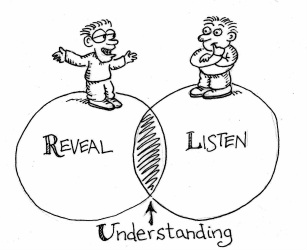 There is often much confusion about offering sympathy or empathy. What is the difference? Which is appropriate, and when. When I was at Unity School (now Unity Institute) taking a spiritual counseling class, our teacher, Dr. Robert Brumet, gave an impactful visual demonstration of the difference between sympathy and empathy. He approached one student and said, “Oh, you have a pen! Can I hold it?” The student handed him the pen. “This is a pen? How wonderful! Do you like it? Does it write well? Thanks for sharing with me!” Dr. Brumet then proceeded to walk away from the student—carrying the student’s pen! “That’s sympathy,” he told us. Then he walked up to another student and asked to see that student’s pen. He looked at the pen, turned it side to side, nodded understandingly, and handed it back to the student before walking away. “That is empathy.” This demonstrated that sympathy is taking on someone else’s problem as our own, carrying it with us, trying to solve it, worrying about it or taking control of it. It can disempower the rightful owner of the problem, taking away the learning opportunity inherent in every challenge. Dr. Brumet’s demonstration defined empathy as understanding another person’s problem, seeing it for what it is, allowing them to resolve it as they deem necessary, and empowering them through our belief in their own competency. When my husband and I first began processing together, he taught me the concept of “holding the space”. Holding the space simply means being a compassionate but neutral listener, open to guidance that might support the speaker. Is this not what therapy is in essence? If he shared his process with me, and I walked away with it as my own, how would that help either of us? In our work towards emotional healing, carrying around another person’s pain adds the pain of one person too many! We have our own work to do! While we can understand and support others, we do not have to solve their problems. What a relief! 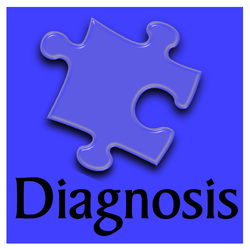 “I’m too spiritual for a diagnosis. I’m not going to take medication, and besides, what does a diagnosis have to do with spirituality? ” I have been asked this question frequently, and understandably so. There is still a lot of stigma on mental health issues, not only because of insurance issues, privacy or the fear of being judged as “crazy”; but also among the more spiritually-minded folks who don’t want to identify with the label. Some people feel that having a diagnosis will somehow become a mental block for wholeness. Ironically, every once in a while, I will hear “I am a [such-and-such number] on the Enneagram”, or “I am a [four letters] on the Myers-Briggs scale” as a reason why they are unable to change who they are or how they manage their lives. But just as these personality-type labels can serve as a self-awareness tool–not a lifetime sentence–a diagnosis can bring light to areas to push a little harder, or surrender a little more, in order to support the evolution of soul awareness. Spirituality is not the absence of issues—including diagnoses—but the working through them. Instead of seeing a diagnosis by your doctor or therapist as a lifetime sentence, try using it as a tool for understanding those limitations you are here to overcome. Any diagnosis can show us our strengths and limitations. Our job is to use those measurements to understand ourselves, and move forward where we have been limited, using the strengths that we have accumulated! For example, if you have anxiety, what tools can you use to support your own peace of mind? If depression is a problem, how can you stretch beyond your comfort zone? Attention deficit issues? What a great opportunity to learn focus and presence! Your solution will be as unique to you as the challenges that you are dealing with. Get support. You don’t have to do anything alone! And by all means, if medication will support you best, go for it! It is sad to me when a client won’t allow themselves to benefit from medication, and continues to struggle with a brain make-up that is overwhelming them, in spite of their best efforts! Years ago, I had to get off my judgments and fears regarding Western medicine. It was the Universe telling me, “Let go of your hang-ups, lady! You have to learn to trust Me in whatever way I direct you!” Be open to your soul’s messages. This will benefit your spiritual development the most. Take the outer signs within you, and ask your inner guidance “How can this benefit my soul growth?” Don’t be too spiritual for a diagnosis. Be too spiritual to stay stuck. |
Archives
April 2016
AuthorLynn Barrette, LCSW Blending psychology with spirituality, I offer tools for forgiveness, acceptance, meditation and relaxation, and positive parenting solutions. Categories
All
Archives
April 2016
|

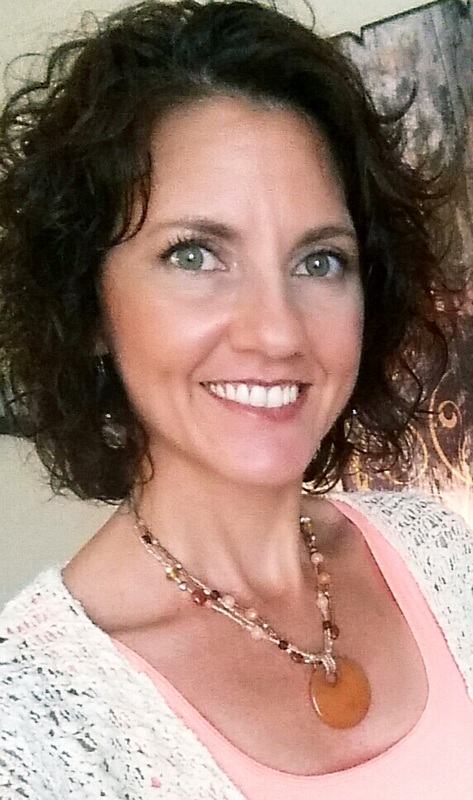

 RSS Feed
RSS Feed